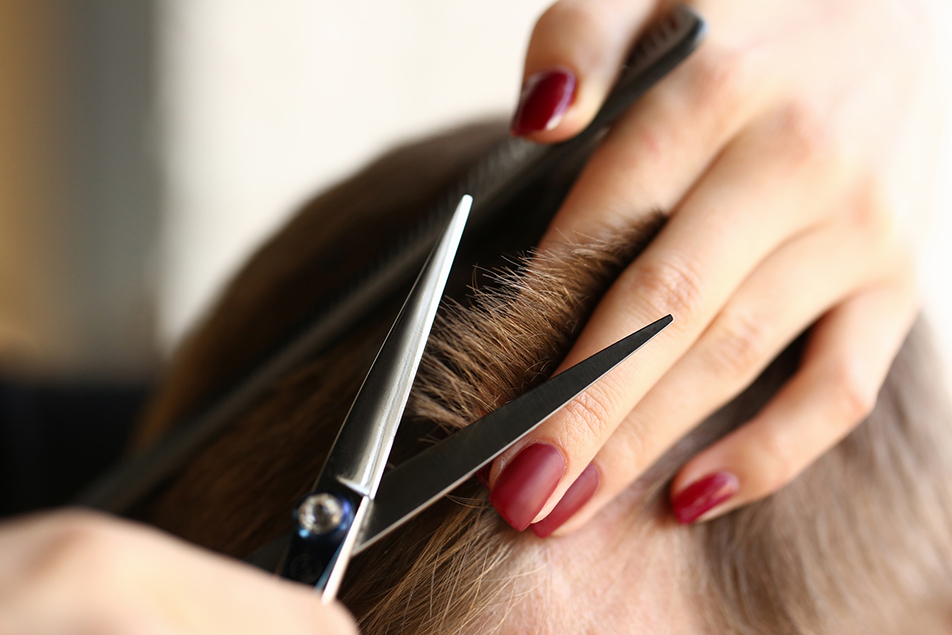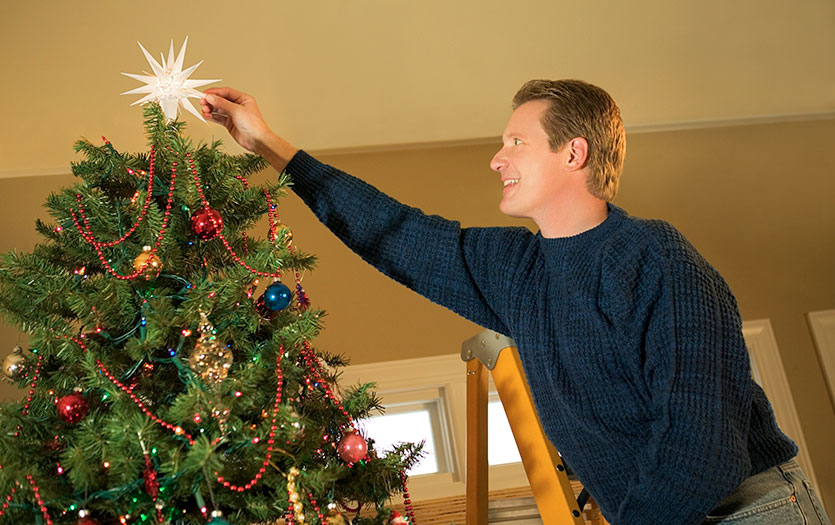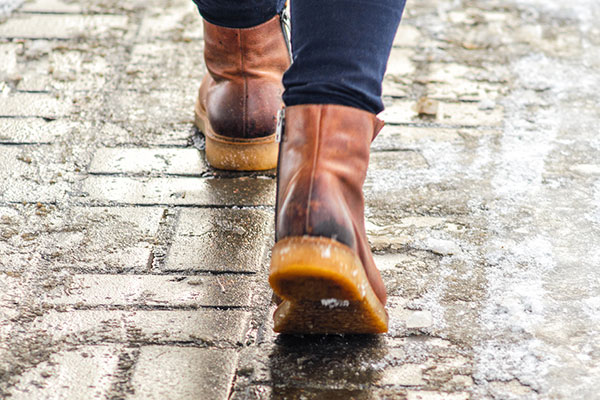
This post was written by Chris Frazier, MD, PPG – Family Medicine, primary care section chief Noble, Steuben and LaGrange Counties.
As restrictions ease, we will be able to utilize more services. Much to the delight of many, soon we will be able to get our hair trimmed, colored and treated. As we return to tending to our tresses, the topic of safety does come up. There are a lot of questions related to COVID-19 and services like this, and I did my best to answer some of them, with the limited research available. It’s difficult when social distancing isn’t possible. Much of the risks related to providing this type of service are similar to those of the work I do, providing health services, with the close contact it involves. The advice below applies to most businesses.
What are some of the potential risks around getting a haircut and what can I do to reduce my risk?
The potential risk of getting a haircut right now is similar to any close interactions as I face in my clinic. We can unknowingly be exposed to SARS-CoV-2, the virus that causes COVID-19. The stay at home order was put into place to decrease the rate of new cases. While COVID-19 and the stay at home orders have created a strain on all of our lives, the curve has flattened and prevalence is low enough in areas to begin phasing in our return to a sense of normalcy. We are all anxious to get back to our routine, but we have to be safe and smart so we don’t go backward. Certainly, following each state’s guidelines is important as the prevalence and impact of COVID-19 can vary from region to region.
What should the hairdresser do to protect him/herself?
Many strategies can be used to help keep both the hairdressers and the salon space safe. Many of these will be universal for all businesses. Obviously, it’s very difficult for hairdressers to avoid close contact with clients. Here are some things I recommend:
Self-care: Maintaining overall health, exercise, good sleep and nutrition may sound cliché, but if one were to contract this virus the improved outcomes are seen in the healthier population. Those already at high risk of poor outcomes should consider the pros and cons before returning to work. Whether you are the client or the hairdresser, stay home if you are sick.
Proper hygiene: By now, many are tired of hearing about the importance of handwashing, not touching your face and mouth, and covering a cough or sneeze with your elbow or a tissue. But, it remains one of the most effective means to avoid sharing any virus or bacteria.
Personal protective equipment (PPE): Masks should be worn by both the client and the hairdresser. The role of a cloth mask is more to prevent a person with the virus from passing it to another. However, it can help block larger droplets of water from being inhaled. The mask needs to be worn properly to cover both the nose and mouth. Masks are hot and uncomfortable, especially when one is working, so you must avoid repeatedly adjusting it or taking it on and off. If you need to adjust it or remove it, then wash your hands before and after. Avoid removing it until you’re done with a client. Put up a hook to hang the cloth mask to dry between use or put it in a brown paper bag. You should be sure to wash the mask at the end of the day.
Eye protection is also recommended, if possible. Using gloves may be controversial. I think those not in the habit of appropriate glove use to protect themselves may be better to go without. I have seen people wearing gloves in the community touching multiple things, then touching their clothing, face and phones. This really is not protecting them. Use gloves like you have normally in the past. Also, consider using gloves when cleaning, then practice appropriate disposal and handwashing after use.
Social distancing (also referred to as physical distancing): Now is the time to communicate and be social with others but keep an acceptable distance. Unless you have 6-foot robotic arms, this will be difficult for the hairdresser-client interaction. However, the distancing of chairs in the waiting room and the barber chairs and spacing the stylists’ working areas would be ideal. Owners will need to be creative in adjusting the hours to limit how many employees are working at the same time. Setting up a system for clients to wait in their car until their chair is cleaned and ready for them would be one suggestion. If the waiting room must stay, remove unnecessary things such as magazines, candy, water coolers, etc.
Scheduling changes: It’s important to adjust the schedules of the employees in salons with multiple hairdressers to avoid crowding. For all salons and in-home hairdressers, consider blocking a portion of your schedule in the morning for your more high-risk patients so they may come into a clean space with limited interactions. I would encourage those at high risk to stay home, but I know that, for some, that weekly hair appointment puts a lift in their step.
Cleaning: Wash and disinfect all surfaces, tools, chairs and basins after use to protect both the clients and the hairdresser. Owners should also perform a thorough cleaning and disinfect everything before the shop reopens and at the end of their business day. The use of gloves would be best during the cleaning, including sweeping up fallen hair as there have not been conclusive studies if the virus can live on hair. The individual doing the cleaning should remember not to touch their face or body with the gloves, and dispose of them properly. Hands should be washed immediately after cleaning. Disposable and/or washable capes/smocks/neck strips should be changed out for each client. When the day is done, hairdressers should consider changing their clothes at their place of employment, or at least putting their clothes in the washer once home and showering before interacting with others.
Client and employee screening: I recommend that employees check their own temperature in the morning and at night. Do not have them come to work if they are ill. Screening customers for symptoms such as cough, fever and exposures to people infected will likely become the new normal. This requires both parties to be honest with their symptoms. Strategies should be developed for the use of walk-ins. Ideally, limiting them for now or at the very least, owners should put a sign out front telling them to call so that the hairdresser can screen for symptoms and give them an appointment that will be in line with other measures listed above.
What should the client do to respect/protect the hairdresser?
Those with symptoms of illness should stay home and seek advice from their primary care physician. They should be respectful of measures the hairdresser or salon put in place to protect both themselves and the client, even if it means waiting a little longer for that haircut. We must respect each other by not just thinking about how we can protect ourselves, but also how we can protect others. We can all potentially pass this virus. Being smart and safe can help use limit new cases and deaths while moving forward to our new normal.
What should the client do to protect him/herself?
Like the hairdresser, clients should practice good hand washing before and after the haircut. I would also recommend changing clothes when they get home, even with the interventions by the hair salon. Everyone should take care of their health in general and manage chronic medical conditions. Those at high risk of complications from COVID-19 should continue to limit their exposure in hair salons and other community settings.
We all want to get back to normal, but for us to manage cases effectively, we must do so in a smart, phased approach. There are reasons our country now has more than 1 million confirmed cases compared to the next highest country, which is Spain, with just over 200,000 cases (John Hopkins World Map). We continue to have deaths and new COVID-19 diagnoses daily. Understand that we will see an increase in cases as we try to reopen our country, which can be quite scary to those with first-hand experience of this illness. Hopefully, we can all respect the virus and respect others so we can slowly reopen safely and limit new cases.



